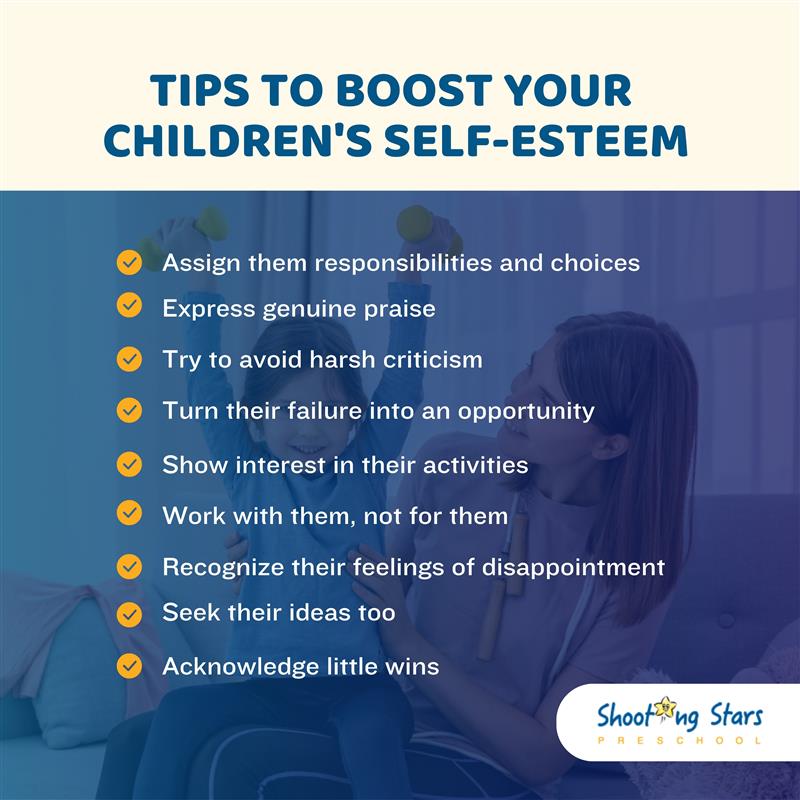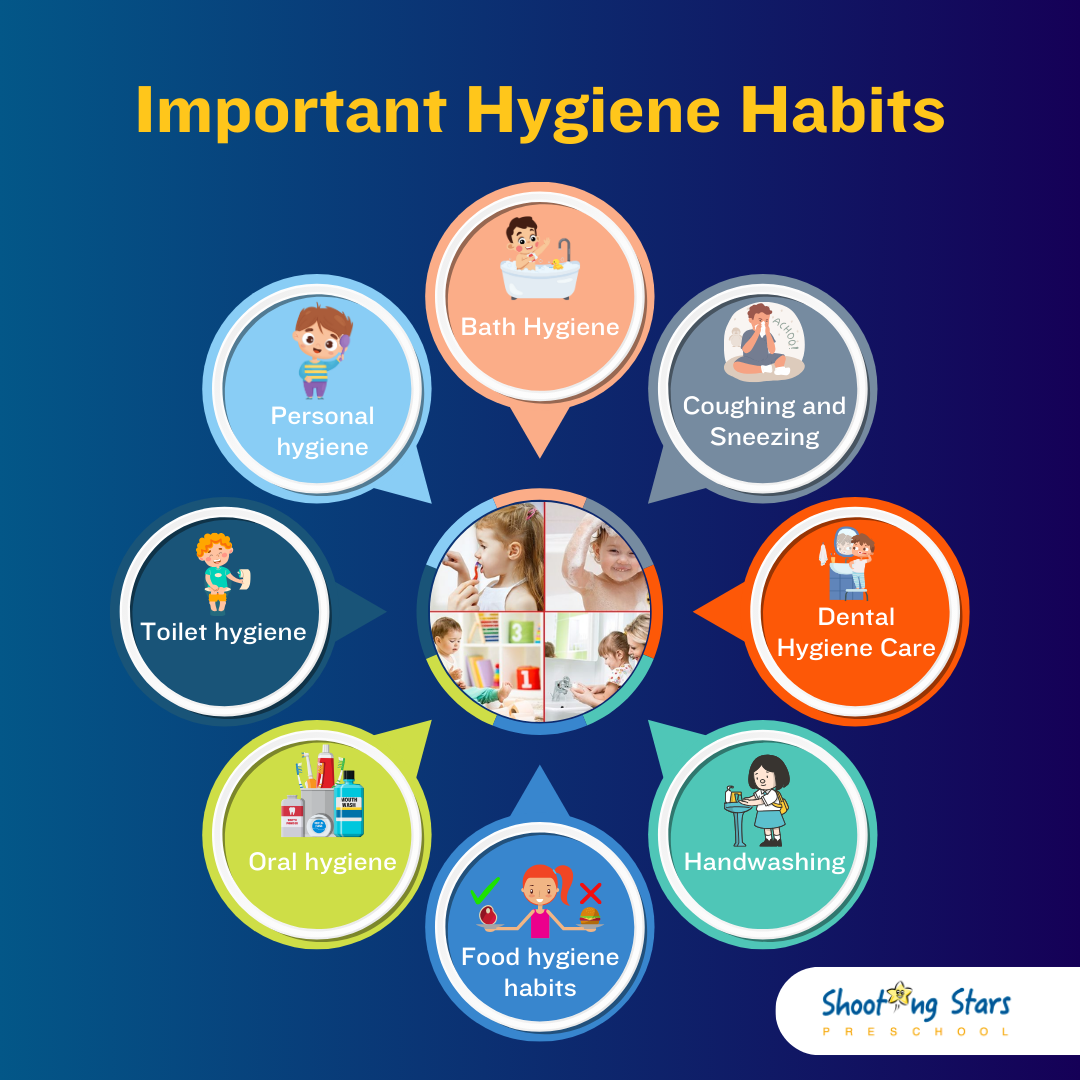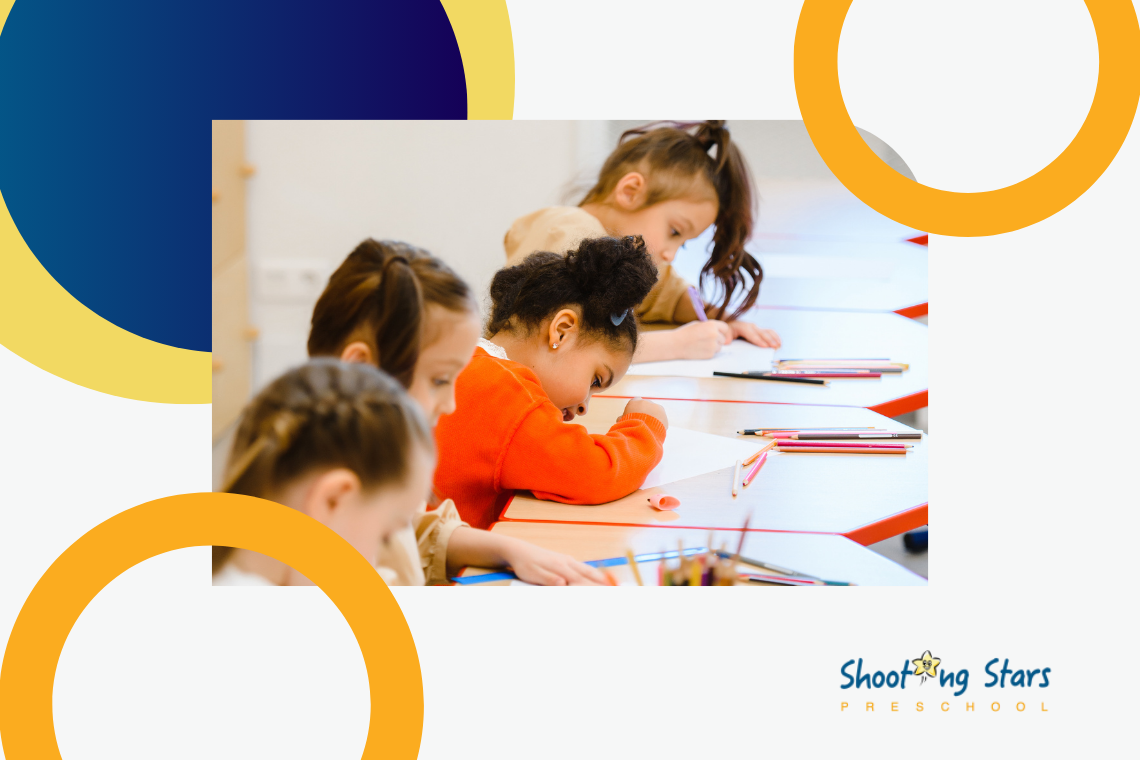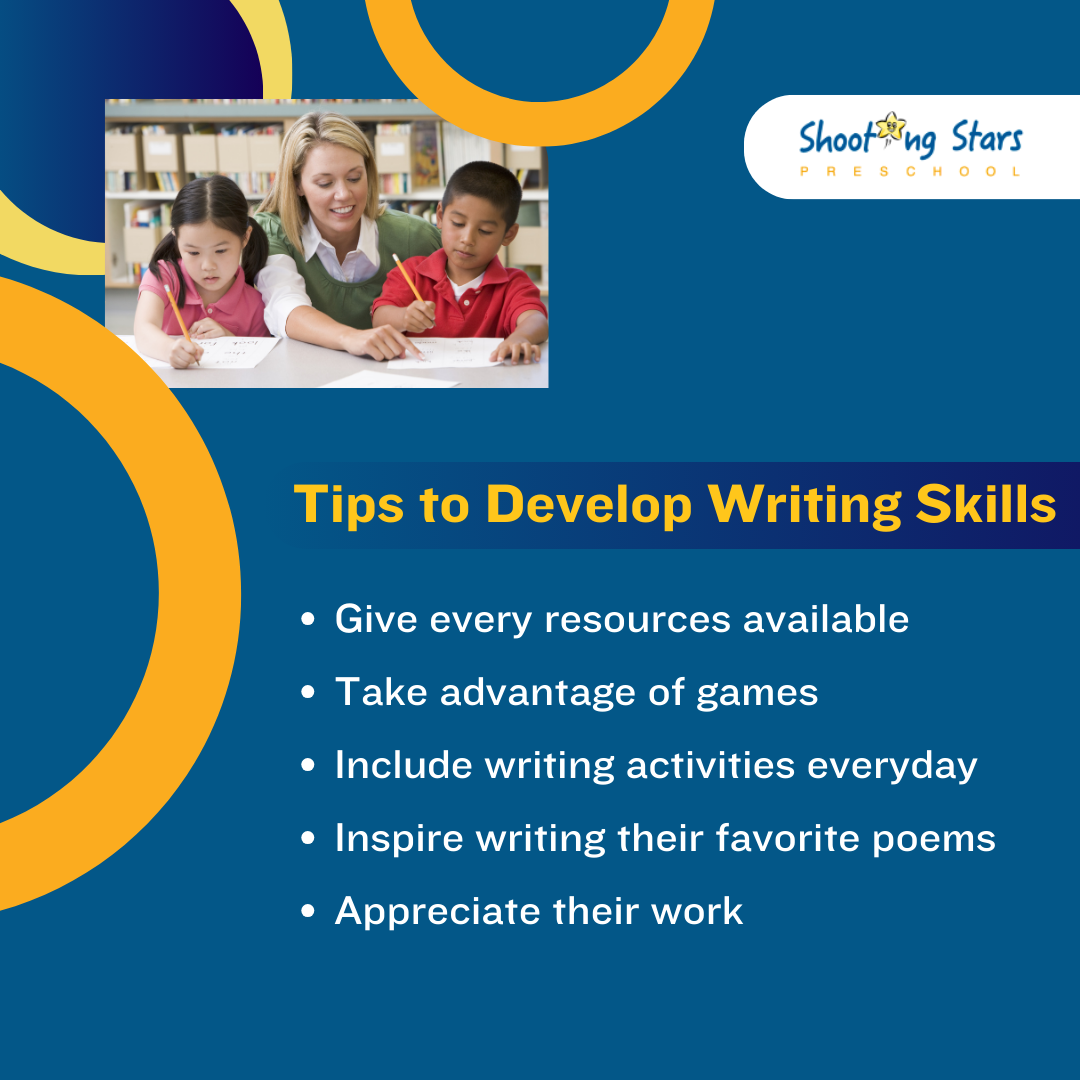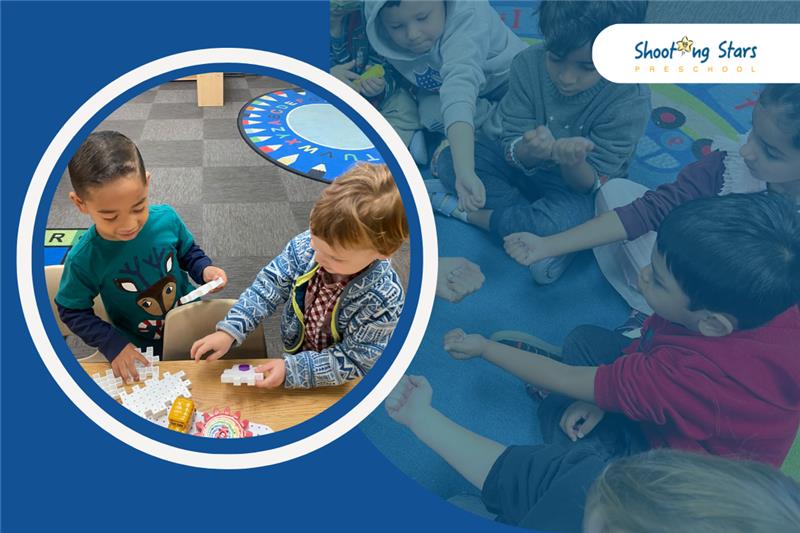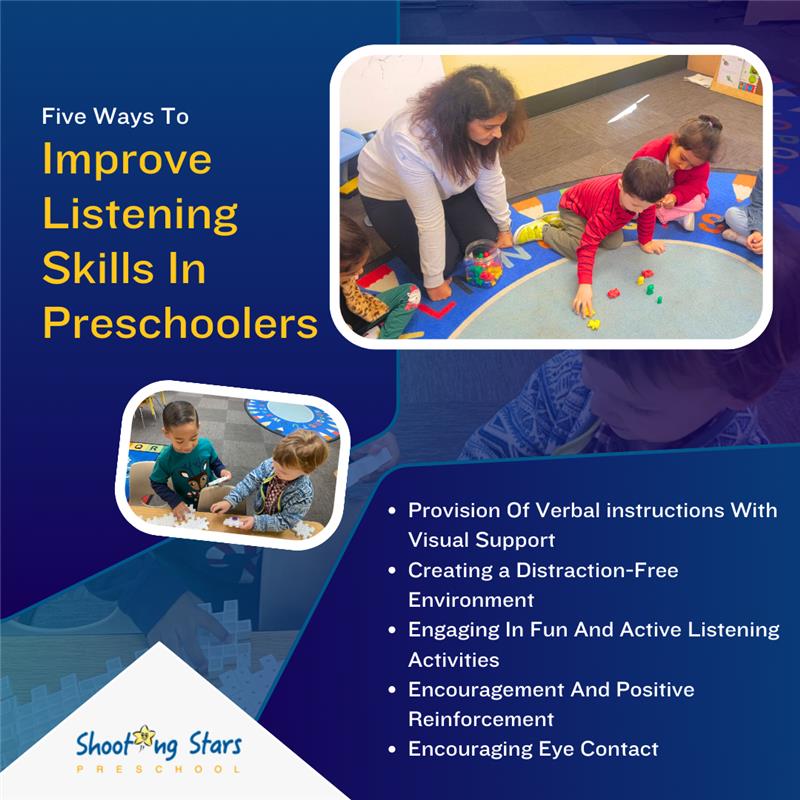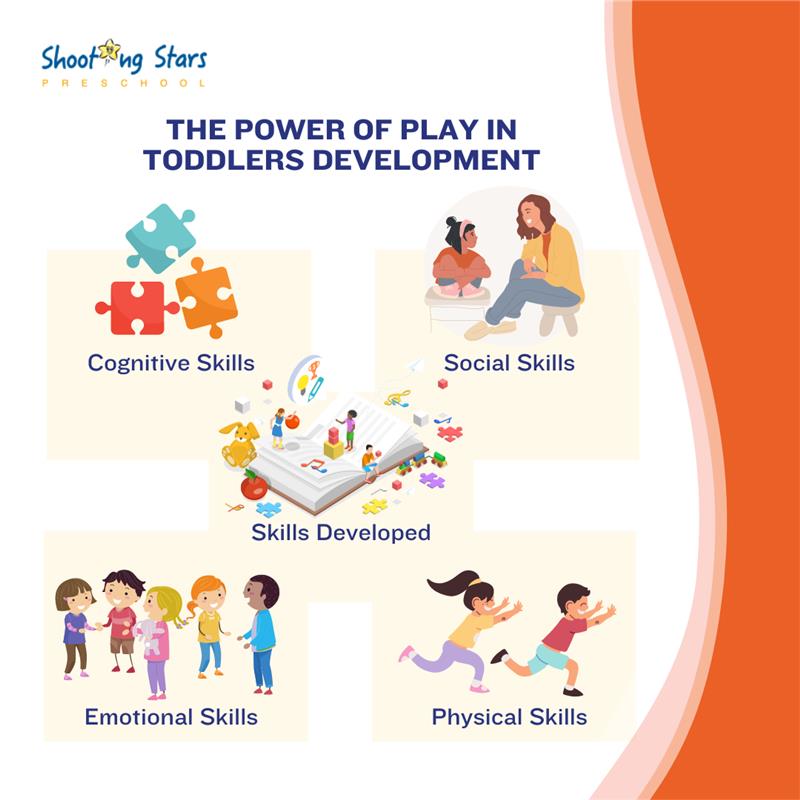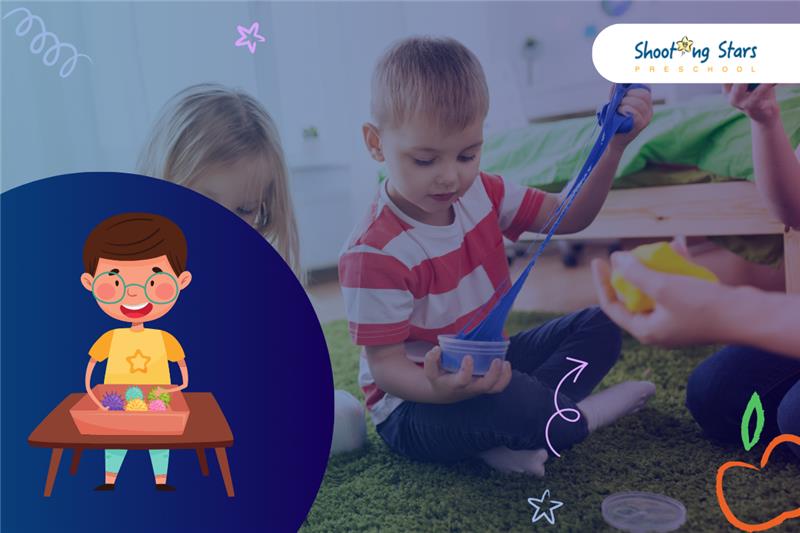|
Is your toddler's defiance turning your trips to the park into war zones? You're not alone!
Babies grow into toddlers, but one thing that remains is their mighty tantrums. As a parent, it can be challenging to accept that it's time to introduce the word "no," an important part of taming toddlers. The baby who was once pampered for their tantrums is now becoming a toddler and needs to be disciplined. Balancing their mood swings and managing their energy by offering a mix of activities, screen time, and meaningful toys are key factors for kids at this stage.
From understanding their cries to developing cool-down techniques, this article will help turn tantrum battles into triumphs. It provides practical strategies to navigate the stormy seas of toddler tantrums, guiding you to find calm amidst the chaos.
Key Takeaways
Toddler Taming Stages
Tantrums are a typical part of the adolescent years of a child or person's development, characterized by emotional outbursts and intense frustration. They occur as toddlers learn to express themselves and manage their emotions. It is a child's feelings and a normal part of their growth and development.
Parents need to be fully aware of the stages of handling tantrums.
a. During a tantrum
Keep your cool to model calm behavior. Reacting with frustration can escalate the situation. Acknowledge your child's emotions ("I see you're very upset right now") without giving in to unreasonable demands. Sometimes, a gentle touch or a soothing voice can help calm your child. Other times, giving them space to calm down might be more effective.
Use distraction techniques to shift your toddler's focus to something else (e.g., a toy, a song, a story, or a different activity). For minor outbursts, it might be best to ignore the behavior if the child is safe, as attention can reinforce tantrums.
b. After a Tantrum
Once the tantrum is over, talk to your child about what happened and why they felt upset, helping them understand their emotions. Help your child show positive behavior and think of better ways to handle frustration or anger in the future. Praise and reward calm behavior and show aggressive children appropriate ways of expressing emotions.
Strategies To Control Tantrums In Children
Toddler taming can be challenging, but with practical strategies, parents and caregivers can effectively manage and reduce their frequency and intensity. Here are some ideas for toddler-taming strategies:
1. Understanding the cause:
Parents can better support their children by taking the time to understand the underlying triggers of a tantrum rather than just reacting to the immediate behavior. Understanding and responding with empathy can help address a tantrum-prone to a variety of triggers, such as hunger, fatigue, fear, frustration, overstimulation, lack of attention, peer pressure, or changes in routine. By recognizing and addressing these triggers, parents can gain valuable insight into their child's specific needs and challenges, paving the way for more constructive and supportive interactions.
2. Creating a calm environment:
Establishing a serene and peaceful environment at home can greatly influence a toddler's mental health and emotional well-being. It's crucial to practice gentle guidance rather than using a stern voice or physical discipline, especially during nursery. By minimizing exposure to overstimulation, maintaining a consistent daily routine, and ensuring sufficient rest, we can help children and teenagers achieve a more balanced mental health and emotional state. Creating a tranquil atmosphere at home lays the groundwork for effectively managing and preventing tantrums.
3. Encouraging open dialogue:
Once you've identified what is wrong that triggers your child's emotional outbursts, it's important to respond with compassion and encourage open communication. Depending on your child's age, you can help them learn alternative ways to express their emotions to avoid tantrums. It's crucial to avoid resorting to other parenting practices like bribing, physical discipline, or instantly giving in to your child's demands.
4. Working closely with teachers
For a smooth transition during the initial weeks of preschool or kindergarten, it's crucial to maintain open communication channels with teachers. Schools should proactively engage in personal conversations with parents to address any emerging tantrums or behavioral changes in new social settings.
5. Setting boundaries and offering choices
Empowering children to make choices and promoting common sense and independence fosters the development of self-regulation skills. Establishing clear boundaries and setting expectations influences behavior in young adults and helps prevent tantrums. Providing children with opportunities to explore the world, make choices, and develop independence allows them to build their own identities.
6. Prevention strategies
Predictable routines help toddlers feel secure and reduce anxiety, which can prevent tantrums. Offering toddlers limited choices gives them a sense of control. Identify and avoid situations that are likely to trigger tantrums, such as hunger, tiredness, or overstimulation. Encourage toddlers to use words to express their feelings and needs rather than acting out.
7. Long-term strategies
Use consistent and fair rules and practical advice to help your toddler understand boundaries. Demonstrate appropriate ways to deal with frustration and anger in your behavior and introduce inner work and deep breath tactics. Allow your child to do age-appropriate tasks independently to build confidence and reduce frustration. Create a supportive, light-hearted home and school environment for raising children that fosters positive emotional regulation.
These parenting strategies, combined with patience and understanding of middle schoolers or older children, can help you effectively manage and reduce toddler tantrums. At a preschool in Dublin, experts combine their knowledge with experience to help parents and toddlers at this tender yet crucial stage.
Conclusion
Effectively managing toddler tantrums or toddler taming is an ongoing process of parenting that involves demonstrating patience, utilizing stories, establishing consistent routines, teaching children feeling words, and introducing effective coping skills. By applying these strategies, parents can navigate tantrums with empathy and understanding, ultimately fostering healthy emotional development in their children.
Frequently Asked QuestionsQ. What are three tips for handling temper tantrums in toddlers?
Pay attention and engage. Empower kids to make decisions in small world matters. Ensure no obstacles hinder your connection. Find ways to involve the children actively. Support parenting and the enhancement of children's life skills. Take note of your child's interests and encourage exploration."
Q. How do you tame a two-year-old tantrum?
When addressing a child's behavior, it's best to avoid shouting, as it can escalate the situation. Instead, try using positive distractions such as changing the book's location or making funny faces to shift their focus. Additionally, calmly and firmly communicate your expectations to your kids.
Q. How do you tame an out-of-control toddler?
Here are some helpful parenting tips for managing children's behavior:
Nursery and kindergarten classrooms are often filled with rows of children diligently completing worksheets. While these activities can serve a purpose, they can also stifle the natural curiosity and creativity that young children possess. In the bustling world of early childhood education, it's crucial to go beyond the confines of traditional worksheets to encourage students to cultivate critical thinking and foster creativity in early learners. By doing so, we can nurture the problem-solving and fine motor skills of children from nursery to elementary school, setting a foundation for lifelong learning and innovation.
This blog delves into the importance of critical thinking skills and offers insights into how these valuable skills can be cultivated during child development. Keep reading!!
Key Takeaways
What Is Critical Thinking?
Critical thinking for students involves the early development of skills that enable young children to analyze, evaluate, and interpret information in their environment. At this early age, critical thinking focuses less on abstract reasoning and more on fostering curiosity, encouraging exploration, positively impacting perception, individuality, general analytical skills, academic performance, metacognition, practical applications of theoretical knowledge, and decision-making.
Importance Of Critical Thinking In Early Education
Critical thinking is a valuable skill that should be nurtured from an early age. It involves the ability to analyze information, make decisions, and solve problems effectively. Fostering critical thinking abilities from a young age helps students process information logically and encourages them to have a deeper understanding of the subject for future academic success.
While worksheets have their place in education, they often fail to engage young minds in a meaningful way. Instead, we focus on interactive and hands-on activities that stimulate curiosity and creativity.
Moving Beyond Worksheets: Strategies for Early LearnersDeveloping Problem-Solving Abilities
Problem-solving is an essential life skill that is nurtured at an early age. Through various activities, encourage children to think critically and let them come up with solutions to problems.
Problem-solving Activities
Puzzle Games and Logical Challenges
Collaborative Projects
Encouraging Innovation And Creativity
Innovation and creativity are vital components of a well-rounded artistic expression that provide ample opportunities for children to express themselves creatively.
Art and Craft Activities
Music and Movement
Storytelling and Role-Playing
Promoting Independent Learning
Independent learning should be encouraged to explore their interests and learn at their own pace.
Self-Directed Activities
Montessori-Inspired Learning
Hands-On Experiments And Exploration
Nurturing these traits of curiosity and exploration in young children is not only beneficial but also stimulates creativity, active listening, and a growth mindset, impacting their development.
If you're looking for a preschool in Dublin that prioritizes critical thinking and project-based learning? Look no further than Preschool in Dublin for cultivating the next generation of innovators, thinkers, and problem-solvers.
Conclusion
Critical thinking skills and creativity in early learners are crucial for developing key skills that will benefit them throughout their lives. Moving beyond worksheets, interactive and hands-on activities promote creativity and critical thinking. These activities help children develop social skills, emotional intelligence, and fine motor skills. This approach fosters independence, responsibility, and a sense of ownership in their educational journey, enhancing the skills they need for future success in life.
Frequently Asked Questions (FAQs)Isn't there any benefit to worksheets?
Worksheets are helpful for practicing specific skills like letter recognition, number sequencing, or following directions. However, they should not be the sole focus of early learning experiences.
How can I incorporate these activities at home?
There are many ways to bring these activities into your home routine. You can set up a sensory bin for exploration, encourage imaginative play with open-ended toys like blocks or dolls, or ask open-ended questions during everyday activities like reading or taking a walk.
What are some signs my child is developing critical thinking skills?
Does your child ask "why" questions frequently? Do they approach problems creatively, trying different solutions? Can they explain their thought process and reasoning behind their choices? These are all signs your child is developing critical thinking skills.
Teaching children about personal boundaries, especially the distinction between good touch and bad touch, is an essential part of their upbringing. This guide aims to help parents, educators, and caregivers navigate this sensitive topic and ensure that kids understand the importance of personal space and physical contact.
Key Takeaways
Understanding The BasicsWhat Are Personal Boundaries?
Personal boundaries are the guidelines we establish regarding how others can interact with us, particularly concerning our physical space and body. Educating children about personal boundaries helps them understand their rights over their bodies and empowers them to protect themselves from unwanted or inappropriate contact.
Good Touch vs. Bad Touch
Good touch is any physical touch that feels comfortable, safe, and consensual. It includes hugs from relatives, holding hands with friends, or a pat on the back from a teacher.
Conversely, bad touch refers to any physical interaction that causes a child to feel uneasy, frightened, or perplexed. It includes any touch that is inappropriate, unwanted, or done with ill intent, such as hitting, touching private parts, or any touch that makes the child feel uneasy.
In the early age of schooling, such as kindergarten, it's pivotal to introduce children to the concept of personal boundaries, encompassing the understanding of good touch and bad touch. Starting at this stage lays a solid foundation for children to navigate social interactions with confidence and stay safe.
How To Teach Kids About Good Touch And Bad TouchStart Early
Use Everyday Opportunities
Role-Playing and Stories
Model Behavior
Use Clear and Direct Language
Activities To Teach Appropriate Boundaries
Preschool in Dublin provides an ideal setting for introducing young learners to the important issue of personal barriers, emphasizing the distinction between good touch and bad touch through interactive and engaging activities. In these early years, children in Dublin's preschools begin to develop essential skills for navigating social interactions while ensuring their safety and welfare.
Activity 1 - "My Body Belongs to Me"
Create a fun and interactive game where you teach children to identify and talk about which parts of their body are private and should not be touched by others. Use a doll or a drawing to make it more engaging.
Activity 2 - Boundary Charades
Play a game of charades where children act out different scenarios involving personal space and physical contact. Discuss each scenario and determine whether the touch was appropriate or inappropriate.
Activity 3 - Safe and Unsafe Touch Sorting
Provide children with various scenarios on cards and have them sort these into "safe touch" and "unsafe touch" categories. This visual activity helps reinforce their understanding of different types of touches.
Activity 4 - "What If?" Scenarios
Present children with "What if?" questions related to personal borders and discuss the appropriate responses. For example, "What if a friend wants to hug you, but you don't feel like hugging?"
Addressing Sensitive SubjectNormalize the Conversation
Discuss personal boundaries as a regular part of your communication with children. It helps remove any stigma or discomfort associated with the sensitive topic itself.
Involve Trusted Adults
Ensure children know they can talk to trusted adults, like parents, teachers, or a child's doctor if they ever feel uncomfortable or confused about physical contact.
Reiterate the Concept of Consent
Parents should teach children that they have the right to say no to any touch that makes them feel uncomfortable, even if it's from family, grown-ups, friends, or a person they know.
Creating A Safe Environment
In the Nursery settings, educators play a vital role in laying the groundwork for children's understanding of personal boundaries and distinguishing between appropriate and inappropriate physical touch.
Encouraging Open Communication
Encourage children to speak openly about their feelings and experiences. Let them know they can come to you with any concerns about personal borders.
Providing Reassurance
Reassure children talk about their feelings as valid and that it's okay to set boundaries. Emphasize that they have control over their bodies and should always feel comfortable, safe, and respected.
Educating Family Members
Ensure all members of the family understand the importance of respecting a child's limits. Discuss appropriate behaviors and the significance of consent within the family.
Seeking Professional Guidance
If parents are unsure how to approach the topic, seek advice from child psychologists, educators, or a doctor. They can offer essential insights and methods for successfully teaching personal limits.
Conclusion
Educating children about the difference between good touch and bad touch is an essential aspect of their growth and development. By starting at an early age, using clear language, and engaging in interactive activities to educate children, you can help children understand and respect personal boundaries. This education takes responsibility for their well-being and helps them feel safe and confident in their interactions with others.
Its parent's responsibility to create an environment of trust and open communication is key. Encourage children to speak up if they ever feel uncomfortable and provide them with the knowledge to recognize and respond to bad behavior. By doing so, you empower them to protect themselves and build healthy relationships throughout their lives.
Frequently Asked Questions (FAQs)How do I approach the topic without scaring my child?
Approach the topic calmly and reassuringly. Use positive language and emphasize that it's about keeping kids safe and comfortable.
What should I do if my child's doctor reports a bad touch?
Stay calm, listen carefully, and reassure your child that they did the right thing by telling you. Report the incident to the relevant authorities and seek professional assistance if necessary.
How can I reinforce these lessons as my child grows older?
Continuously revisit the topic and adapt the conversation to your child's age and understanding. Discuss different kinds of relationships and the limits of personal boundaries in each.
Can this conversation impact my child's view on physical affection?
When handled appropriately, this conversation will not make children fearful of physical affection. Instead, it will help them understand and appreciate consensual and loving touches.
Watching your children struggle with low self-esteem can be disheartening. And it's quite common for parents to worry about their children's self-confidence and how it might affect their future.
And if you are one of those parents who is worried about your kid's low self-confidence, then worry not. You are not alone.
Remember, developing confidence is a gradual process that demands patience and effort. By providing your child with love, support, and positive reinforcement, you can help them build self-esteem they need to take on the world. Ultimately, you want your children to be happy and successful, pursuing their passions and leading fulfilling lives.
So, if you're wondering how to raise a confident child, then this blog is for you. This post will lead you through several tips to assist your kid build confidence.
Key Takeaways
Tips To Boost Your Children's Self-EsteemAssign them responsibilities and choices
Many children experience limited control over their daily lives. We, as parents, tell them when to get up, what to dress, what to eat, and how to plan their days.
And this lack of making their own decisions can leave them feeling powerless.
Offering children choices empowers them to take ownership of their decisions and fosters confidence as they mature. So, encourage your children to make choices in various aspects of their daily routines, whether it's opting for a bath or shower, selecting when to do homework, or deciding on new learning strategies.
These small decisions can collectively help them to enhance their self-esteem.
Express genuine praise
It's commonly believed that constant praise is beneficial for your kid's self-esteem. While praise is valuable, it's crucial to use it judiciously.
Excessive praise ("You're great!" or "You're the best artist ever!") can actually hinder the child's development by setting unrealistic expectations. If children constantly hear that they excel at everything, they may lack the motivation to strive for improvement. True confidence stems from facing new challenges, experiencing setbacks, and making genuine progress through hard work.
Moreover, genuine praise is more effective. Research suggests that while younger children such as nursery kids may accept praise at face value, older children are more discerning. Therefore, offering authentic praise for real achievements is key to nurturing confidence and healthy self-esteem in children.
Try to avoid harsh criticism
Parents play a heroic role in their children's lives, yet they're also human and prone to frustration. Despite occasional slip-ups, it's crucial to recognize the impact your words have on your kid's self-perception. The way we perceive our children, or how the kids feel/ perceive our views of them, profoundly influences their self-image.
Therefore, it's vital to avoid sarcasm or harsh criticism like "You're so dumb!" or "Why are you behaving badly?" Instead, take a moment to step back, breathe deeply, and regain composure before responding.
Harsh messages aren't motivational; they're detrimental, leading to negative self-perception over time. While correction and criticism are sometimes necessary, delivering them with kindness rather than anger is key. Additionally, reassure your child that while you may disapprove of their behavior at times, you always love and accept them unconditionally.
At Preschool in Dublin, the curriculum is designed with a holistic approach, fostering emotional, physical, cognitive, and language growth through diverse educational philosophies.
Turn their failure into an opportunity
Rather than damaging a kid's self-esteem, failure presents a golden opportunity to nurture it. Young children especially need the freedom to explore and take risks without fear of criticism from their parents or adults.
Take a moment to breathe, allow your child to face challenges, make mistakes, and occasionally stumble. Reassure them afterward that your love remains unchanged.
Focusing solely on your child's successes may inadvertently convey that your love is contingent upon their achievements. Emphasizing unconditional love can foster feelings of self-worth and support, which is vital for healthy self-esteem.
Show interest in their activities
Is your child passionate about spending hours writing stories, drawing, or creating YouTube videos?
While we may perceive these activities as time-consuming, they hold significant value for your children. While it's important to establish boundaries, it's equally crucial to support and encourage your children to pursue their passions.
So, take an interest in their hobbies and explore a few together. By doing so, you convey to your children that they are valued and loved unconditionally, irrespective of their performance.
Work with them, not for them
Encourage your children to become independent from a young age such as from kindergarten by assigning them simple tasks, such as making breakfast, getting drinks and snacks, or preparing their backpacks for school.
If they're too young for certain tasks, involve them by having them assist with activities like chopping vegetables or measuring ingredients while cooking. This process demands patience from parents, but it helps children build confidence and a stronger sense of responsibility over time.
Recognize their feelings of disappointment
In life, disappointment is inevitable. You can't shield your children from experiencing moments of discouragement. Acknowledge that everyone encounters tough and bad days. Let your child understand that it's normal to feel sad, and reassure them that these emotions are valid.
Avoid disregarding your child's emotions. Instead, assist them in navigating through their feelings. Be patient and emphasize that overcoming challenges builds resilience and mental fortitude.
As they process their negative emotions, your child will recognize the ability to grow strong and emerge as a resilient individual.
Seek their ideas too
When you ask your kids about their opinions on certain things, you convey your interest in their thoughts and emotions.
So, to foster confidence in your child, involve them in decision-making. For instance, engage your children in discussions about bedtime routines, family rules, or meal choices. This way, they will feel that their input is valued and respected.
Also, if there is a problem, seek their ideas and opinions. You never know; they might offer some insightful solutions. By soliciting their opinions, children feel empowered to contribute meaningfully, recognizing their ability to influence their surroundings.
Acknowledge little wins
Recognizing achievements, big or small, boosts morale and inspires us to tackle future challenges.
So, when your kids make progress or overcome a fear, join in the celebration. Family activities like picnics or park outings foster a sense of togetherness.
Also, make sure you say positive things regularly to uplift your children, which will foster their drive for improvement. Furthermore, don't forget to celebrate your victories; this sets an example for your children, teaching them the value of acknowledging progress and learning from success.
Conclusion
As you work on enhancing your children's self-esteem, approach it gradually. Set a good example for your kid to develop confidence in them. Also, instead of always intervening, provide them with responsibilities. Encourage them to adopt new skills and show respect towards others. Involve them in decision-making processes and rejoice in their small to big achievements.
In due time, you'll witness your children evolving into the self-assured, confident adults you've envisioned.
Frequently Asked QuestionsHow can I boost my children's self-esteem?
Encourage them to try new things and acknowledge their efforts, not just their achievements.
What role does parental behavior play in a kid's self-esteem?
Parents serve as role models, so demonstrating confidence and positive self-talk can positively influence their self-esteem.
Should I shield my child from failure to protect their self-esteem?
No, allowing children to experience failure helps them learn resilience and problem-solving skills, ultimately boosting their self-esteem.
How can I address negative self-talk in my child?
Encourage them to challenge negative thoughts and focus on their strengths while providing support and validation.
Teaching kids healthy habits and hygiene practices is no longer a luxury; it is, indeed, a necessity that will groom them to grow up in the right way. Maintaining cleanliness is particularly important for grade-schoolers as they are intensely exposed to playful activities, outdoor games, and environmental pollution that would lead to sweat and skin problems.
This blog focuses on exploring and adopting important hygiene habits for kids, like maintaining cleanliness, washing hands, cleaning clothes, and many other hygiene habits.
Key Takeaways
Bath Hygiene
Bathing is one of the most important hygiene practices to maintain, irrespective of your age. Inculcating the habit of regular evening baths to your child is also one of the efficient parenting practices. Bathing twice a day can help your child stay hygienic and free from exposed environmental dust and toxins. It is a great way to relax internally and sleep well at night.
Kids can start bathing twice a day from the age of 6. Teaching kids the importance of bathing from kindergarten and following it twice a day can help them avoid body odor and other skin rashes. Let us discuss some bathing hygiene practices.
Bathing after play
Apply soap and make your kids wash and bathe properly after a good outdoor play. Proper baths can make a huge difference in avoiding skin rashes and maintaining body and personal hygiene.
Avoiding dirty clothes
Let your child avoid sweaty and dirty clothes. Wearing dirty clothes can easily promote the spreading of germs and lead to skin diseases.
Coughing and Sneezing
A sneeze can spread up to 100 miles per hour and can release 100000 germs into the air. As per research, sneezes can travel up to 200 times farther than originally presumed.
Usage of Tissues
The use of tissues while sneezing is an efficient yet easy way to get rid of germs and prevent the transmission of diseases through the air and viruses. Teaching children to use tissues to cover their noses during sneezing is a good way of maintaining sneezing hygiene.
Usage of hygienic handkerchiefs
Maintaining clean cloth or properly washed handkerchiefs to cover your nose while sneezing is also a good alternative to prevent sneezing unhygienic.
Dental Hygiene Care
Apparently, school-age children have enough motor skills to brush their teeth regularly on their own. Getting your child adapted to the habit of dental floss, brushing the tongue, insides of the cheeks, and the roof of the mouth is a must dental hygiene practice that is necessary to keep your kid's mouth clean and safe.
By practicing dental hygiene practices, your child can stay free and healthy from cavity problems and other serious teeth health problems. To keep your child excited about brushing regularly, you can use fun times or an hourglass filled with times.
Hand washing
Washing hands is a basic hygiene practice to follow. Washing your hands before and after every activity you perform is a great and easiest way to stay germ-free and maintain oily-free and dirty hands.
Adapting your kid to hand washing before and after eating food, playing outdoors, interacting with their peers, or touching unusual materials is a good way of maintaining body hygiene from a young age.
Food hygiene habits
Food hygiene habit is one such practice that cannot be avoided if you are willing to keep your child's health hygiene degree high. While teaching food hygiene habits, explain to your kid the importance of eating healthy over junk food. Let us discuss some important factors to consider for maintaining food hygiene.
Food containers
Maintain clean and washed food containers. Make a habit of washing food containers regularly. By maintaining clean containers, you can avoid food poisoning and the spread of germs.
Proper handwashing
Make sure your kid follows a full-fledged handwash by applying soap and washing every corner of the hands, which will prevent the germs and other bacteria from spreading. Make sure your kid is healthy.
Oral hygiene
Oral hygiene is one of the most essential factors to check, especially when for kids. Taking care of teeth and mouth is essential after every meal. Otherwise, there is a high chance of developing cavities and other oral diseases. Let us discuss the tips to follow for maintaining good oral hygiene in kids.
Brushing regularly
Make sure your kids brush regularly after every meal or at least twice a day, which will ensure clean and healthy teeth and avoid cavities and foul smells from the mouth.
Choosing right toothbrush
Choosing the right toothbrush is important if your kid is young and has just started brushing. Ensure to choose a kid's toothbrush that is harsh-free and soft for the kid's tooth.
Toilet hygiene
A bathroom is a place where maximum germs exist. As long as you keep the bathroom clean and neat, you can allow the child to use it. Let us discuss how to keep the bathroom clean.
Maintenance
Maintaining the washroom can avoid the spreading of germs and promote disease control. Adopt the habit of cleaning the bathroom thrice or four times a week.
Using bathroom fresheners
Use of bathroom fresheners can make your bathroom look neat and clean while maintaining a beautiful aroma.
Personal hygiene
Teaching personal hygiene to children requires patience. Let us discuss some important personal hygiene habits to teach your kids.
These are a few personal hygiene habits to consider for your child to maintain good health from an early age. Better hygiene habits in kids can lead to better growth while avoiding falling sick on a regular basis. Proper hygiene maintenance can build immunity and help them stay healthy.
Conclusion
So far, we have discussed many good hygiene habits to consider for your toddler. Maintaining personal hygiene is one of the good habits to inculcate in children. Occupying themselves with cleanliness and neatness can develop positivity while keeping their mental and physical health high.
Preschool in Dublin offers an array of programs for children that include physical activities, interesting teaching classes, and a fixed timetable to follow and maintain a healthy lifestyle from nursery.
FAQsWhat is the significance of teaching kids personal hygiene habits?
Teaching kids personal hygiene habits not only keeps them away from bad health but boosts their mental and physical health.
How do we teach hygiene habits to kids?
Make a proper schedule, assign hygiene habits as tasks, and make them interesting by offering gifts or surprising them.
At what age can kids start bathing twice a day?
You can make your child start bathing twice from the age of 6.
What are some easy personal hygiene practices to teach kids?
Some easy personal hygiene practices include washing hands before and after meals, wearing neat clothes, maintaining social distancing in public, and using washed food containers.
Do kids really need to learn to write in the age of smartphones, laptops, and computers? The basic answer is YES. Writing is a fundamental method of communication and an integral aspect of education. Children in today's technologically advanced society have few opportunities to develop and enhance their writing skills. This leaves many parents wondering how to help their child develop their writing abilities. Fortunately, parents can do a variety of activities at home to assist their children develop their writing abilities. From enjoyable activities to everyday reading and writing sessions, these strategies for improving children's writing skills can help your child develop their talents quickly. Give them a head start with Preschool in Dublin and some basic exercises outlined in this post, which will enhance their writing abilities at an early age and improve as they grow. Key Takeaways
How Important Are Child's Writing Skills?Writing is a crucial form of communication for conveying ideas, expressing emotions, and avoiding misunderstandings. It is important for children to learn how to write from a young age, starting in nursery class. Over time, they will develop the necessary skills to write efficiently. Practicing and reading are essential for learning the art of writing. As parents, you must encourage kids to participate in diverse activities that will help them develop the habit of writing. Tips And Strategies To Inculcate Writing SkillsFor students who are reluctant to write, practicing writing at home or with a tutor in addition to schoolwork can seem like a daunting task. However, there are plenty of writing activities that you can do with your child at home to help improve their writing skills without requiring you to teach them to write physically. The best part is that these creative prompts and activities are also enjoyable! Discover five ways to encourage your child's self-expression and writing skills and help your child develop these skills without necessarily having to put pen to paper. 1. Give them every resource availableBecause children do not know what they want, equip them with all of the tools and writing accessories they need (pencil, rubber, books, desk, chair, writing pad, etc.). If they have all they need, they will not complain. Remember that the main purpose is to make them comfortable and get them into the habit of their own writing, even if the work is as basic as writing alphabets, numbers, and names. By integrating these creative writing activities into the child's routine from kindergarten, you can help them develop the skills they need to succeed in academics and everyday life. 2. Take advantage of gamesThere are various age-appropriate games and puzzles available to aid kids with word recognition, spelling, and vocabulary development. For example, word games, crossword puzzles, and flash cards are engaging games to help them encourage writing and enhance their fine motor skills. A few other activities include building with Legos and gear, using clothespins to hang clothes, playing board games, and writing letters with writing prompts. Also, by following the guidelines in a "how to draw" book, kids can improve their drawing skills by paying attention to lines, curves, direction, and pencil pressure. At Preschool in Dublin, these activities are transformed into fun and interactive sessions for teaching children. 3. Include writing in everyday activitiesAllow them to observe you write and imitate your writing habits. For example, assist them in making a grocery list, accompany them while shopping, and help them tick off items from the list. Also, if you keep a notebook and write about your daily activities, invite them to sit with you the next time you do it so they can witness. Explain the importance of journal writing and what they should write. Help them comprehend thoroughly. You may also create printable worksheets for younger children who are learning to write so that they can trace and write letters and words every day. Remember that kids won't become masters overnight. They will learn and form habits via consistent practice. Thus, be careful to exercise patience with them. 4. Inspire writing their favorite poems and songsAsk your kid to create their favorite song or poems to help them learn language, rhyming, meaning, and other concepts. Help them write each letter and explain it. Allow them to write one phrase or set basic chores each day. This game is designed to get them into the habit of writing down their favorite things while having fun doing it. You can also read a short story to your child and encourage them to retell it in their own words. This ability helps improve their memory, vocabulary, and comprehension skills and allows them to express their feelings about the story. You may also encourage them to write handwritten letters to family members. 5. Appreciate their workAlways provide positive feedback and show interest in your kid's writing skills. Show a lot of attention to your child's writing and storytelling. Ask questions, acknowledge when they bring home a nice piece from school, and support their writing as much as possible. Praise them for trying out new words and show them how to spell tough words that they may not have spelled correctly before. ConclusionWriting is a valuable practical life skill. While developing strong writing abilities takes time and care, you may assist your child with the above basic writing tasks for kids. Achieving strong writing skills requires plenty of reading, consistent writing practice in a designated location, and the integration of engaging writing activities and games. Even if they're not that good at first, it's never too late to start honing their writing skills. So, always encourage reading and writing and make sure to support them so they don't fall behind. Who knows? Your kid could be the first among your family members to write a bestseller! Frequently Asked QuestionsHow important are writing skills?Writing impacts kids' performance in all aspects of the school curriculum. It helps children to demonstrate the knowledge and learning they have gained. Good writers usually write well on exams. What are ways to help older children develop their writing skills?Encourage them to practice typing on computers at least 3-5 times a year. Help them understand that brainstorming is an ongoing process and that finding the perfect word takes time and effort. Computer writing can help children learn to write effectively. How can a child be set up with a place to write?Please encourage your child to write by giving them writing resources like colored crayons, markers, and pencils. Use different types of paper, a diary, pencil sharpener, marker, and pen to make writing more exciting. How improving writing skills can be fun?Having strong writing skills is crucial for success in many professional settings. While improving writing skills may take time and patience, there are simple writing exercises that can help children get started. Reading and writing extensively in a particular area of interest can enhance creativity and boost writing skills significantly.
From their favorite foods to establishing routines to managing portion sizes at snack time, these strategies can help your child develop a diverse palate. It is common for picky eating to start as early as age 2 or 3 during nursery. Typically, infants are open to trying new foods and are adventurous eaters. However, picky eating tends to emerge when children become toddlers. It's not uncommon for parents to express frustration, saying that their child used to eat vegetables and enjoy different foods, but now, they won't eat anything, which is a common occurrence.
Remember to encourage your child to try a variety of nutritious foods and fresh fruits and vegetables. It's essential to continue introducing a young child to new foods over time to expand their palate. Picky eating varies among preschool children, but for most, it won't improve on its own without effort from parents. Research indicates that it can take anywhere from 10 to 20 attempts, and sometimes more, for a child to develop a liking for a particular food.
Key Takeaways
No More Mealtime Battles: Easy Tips For A Smooth Routine
Though it is not easy to set meal patterns and develop a positive attitude towards food in fussy eaters of kindergarten, here are a few tips that can help get children to be more adventurous when it comes to healthy snack times when eating out.
1. Don't Force Food - Focus on Fun
Make mealtimes a safe and enjoyable space by not forcing your kids to eat when they say they aren't hungry or making them clean their plates. Forcing uneaten food might lead to the child associating food with anxiety and frustration. It can also cause your child's growth, loss of trust in their appetite, and belief that they can't regulate their hunger cues, which can be confusing as they grow. Research shows that forcing food doesn't make a child less picky.
2. Spark Joyful Food Talk
Instead of focusing on how food tastes, develop a child's interest in how the food looks from its shape, texture, color, and smell. Also, trying new foods and eating a variety of healthy foods can help your child feel comfortable when trying different foods. Remember to lead by example. When dealing with food shopping or with picky eaters, discourage the use of words like "yuck" or "gross." Instead, please encourage them to describe how the food looks, smells, or tastes.
3. Serve The Same Meal For All
During mealtime at the family table, it's useful to serve a life-saving dish on the plate that the child will eat for sure. However, it's important to serve the same foods to everyone at the dinner table. Try to prepare the same meal for the entire family. The child may not eat all of it, but it's important to present it and set an example by trying these foods yourself.
4. Start Smart With Small Portion Sizes
Serving large portions of new foods can be overwhelming for toddlers. Rather than giving them a whole scoop of non-preferred food, start by putting just one bite on their plate. Your child may not touch it at first, but frequent exposure to these foods over time will often lead to them becoming more curious. Remember, big portions of finger foods can be scary for kids, so it's best to start with small portions, and you can always add more.
5. Mealtime Magic - Make Meals Fun
When preparing meals, consider the presentation. You can use a cookie cutter to cut foods into fun shapes and add dips to a side of hummus, broccoli, or baby carrots. Sprinkles can also be a fun addition, whether they are actual sprinkles or other shake-on foods like seasonings, herbs, and chia seeds. If a toddler doesn't like the food presented, it's better to ask what can be added to the meal to make it more exciting. Sometimes, it really is as simple as that.
6. Keep Up A Routine
It's important to serve meals and snacks at consistent times every day. Aim for two snacks and three meals daily to establish a routine. Be mindful of the types of snacks and certain foods you offer; while apple slices and fresh fruit are great, cookies should not be a regular choice. Eating unhealthy snacks may decrease a child's appetite when it's time for a meal.
Children thrive on routine, and it is the child's job and the parent's responsibility to decide what food is served and when food preparation is. By offering food at regular intervals throughout the day, children have many opportunities to eat, rather than snacking constantly and not being hungry for meals.
7. Don't Set Boundaries On Treats
Parents may find it challenging to deny their children sugary treats such as desserts and candy. However, it is important to establish healthy guidelines that allow for occasional treats. This can help children learn moderation and how to set boundaries.
When treats are restricted, both the kids eat them, and adults tend to crave them more. It is suggested that the occasional treat be served with a meal, rather than making it a reward for finishing all their food. This approach can help prevent overindulgence and foster a healthier relationship with treats.
8. Limit Distractions - Unplug & Connect
It is important to understand the importance of keeping children engaged during mealtime. While it may be convenient to rely on smartphones or TV to keep them occupied, this can ultimately be distracting. I aim to have children not only pay attention to their food but also to encourage family bonding and conversation when my kids eat a meal together.
9. Get Kids Involved In Meal Planning
While shopping for groceries, ask your child to pick out some fruits and vegetables, or you can also ask children to choose their options for their next meal. Giving them a choice can positively influence whether they will try them during a family meal together. Encourage your kids to help with washing vegetables and setting the table. When children are involved in these tasks, they take more ownership of family meals and may be more willing to try the food they help prepare. While this approach may not always work, keeping them involved will eventually lead to them trying new things.
Preschool in Dublin is a tailor-made nest that helps stressed parents of fussy nursery birdies' meal patterns.
Should Parents Worry About Picky Eaters?
It is common for parents to be worried if their child is underweight, that they aren't getting enough nutrition. As a result, parents often give children their favorite foods to eat to ensure they're getting enough calories. It's a good idea to schedule a meeting with a registered dietitian or physician. There are strategies to tackle this issue while still improving your child's selective eating habits. The key for parents dealing with a picky eater is to maintain consistency and not give up.
Conclusion
Food Independence can help with fussy eating in toddlers. It's important to encourage your child's independence when it comes to food. Present a variety of other healthy eating options and allow your child to decide how much they want to eat. You can also let your child choose between one meal and two or three healthy options to avoid overwhelming them.
Frequently Asked QuestionsHow do I deal with my toddler's fussy eating?
Gradually introduce new foods and continue to offer foods that your kids may not have liked before. Children's tastes change over time, so they may start to enjoy something they didn't like previously. It's important to keep offering a variety of foods to your child.
What do you do when your picky toddler won't eat?
Serve small portions to encourage children to eat their food; set a good example by eating healthy food if you want them to as well.
What are five effective strategies for feeding a picky toddler?
Start by offering them something to eat to show that you like it. When they have a meal, show them a happy face. Give the kids a variety of food that they will enjoy, and serve fresh food with something they love. If you have leftover food, give it to them after frothing it. Please wait a few days and then offer it to them again.
What causes picky eating in toddlers?
Causes of picky eating can include early feeding difficulties, late introduction of lumpy foods, weaning pressure to eat, and early choosiness, particularly if the mother is concerned about this. Protective factors include the availability of fresh foods and eating the same meals with the child.
Listening is an essential part of soft skills that molds a person into a better version. Incorporating listening skills into daily lives can make a huge difference for our loved ones and enable us to support them unconditionally. To achieve soft skills, children from Nursery must be trained to develop listening skills from the initial years of life for a foundational future. This blog covers tips and practices for the development of strong listening skills in preschoolers. Continue reading to explore some fantastic ways. Key Takeaways
Importance of Listening skillsIncorporating listening skills in children from kindergarten incorporates tremendous focus and helps them learn to pay attention without getting easily distracted. Children with solid listening skills tend to become adults with great communication skills and can easily comprehend complex subjects. Listening skills don't mold children into better adults but play a critical role in shaping their careers as they incorporate undivided attention trait, focus, and patience that makes a perfect recipe for success. As we have discussed, listening skills are important in children. Let's explore amusing and enthralling ways of developing children's listening skills. Five Ways To Improve Listening Skills In PreschoolersKeep reading to explore efficient ways to incorporate listening skills in preschoolers. Provision Of Verbal instructions With Visual SupportPreschoolers are highly dependent on visual cues to comprehend and process the information. By associating verbal instructions with visual aids, it is simpler to enhance a child's listening skills. Let us look into some ways.
Creating A Distraction-Free EnvironmentPreschoolers are naturally curious and can get distracted, making it challenging for them to focus on tasks and attentively listen. So, creating a distraction-free environment is important for developing efficient communication and promoting active listening skills in children. Let's discuss some strategies for establishing a distraction-free environment.
Engaging In Fun And Active Listening ActivitiesActive listening is a basic skill that is not just hearing words but also comprehending the meaning, interpreting non-verbal cues, reciprocating genuine interest in the speaker's message, and avoiding interrupting. For preschoolers, active listening skills can be incorporated by following strategies.
Encouragement And Positive ReinforcementEncouraging the child's efforts to improve listening skills by providing positive reinforcement is a powerful way of making them determined to develop listening skills. Praise them when they pay attention and follow your instructions without interrupting. Ask questions to engage them in conversations and validate their understanding by asking them to repeat their own words. Let us explore a few strategies of encouragement.
Encouraging Eye ContactInstruct children to maintain eye contact while listening to others. Eye contact indicates respect and attention and also helps in understanding non-verbal cues. Use visual aids during storytelling and reading-aloud sessions to encourage eye contact and reinforce the connection between words heard and their meanings. Let us learn some strategies to incorporate eye contact.
ConclusionWe have discussed various activities and techniques to train preschoolers to develop active listening from a young age. Reinforcing listening skills can make them good communicators in adulthood. In conclusion, developing good listening skills in preschoolers is an important skill that sets the stage for effective communication and learning. By engaging in active listening activities, fostering eye contact, providing clear instructions with visual support, offering positive reinforcement, and establishing a distraction-free environment, you can help your child become a better listener and communicator from a young age. Preschool in Dublin offers a variety of activities and programs specifically designed to shape the personality of children and reinforce positive spirits. FAQsWhat are some common challenges parents face when trying to improve their child's listening skills?
Some common challenges parents face include distractions, short attention spans, difficulty following instructions, and limited understanding of language nuances. It can also be challenging to find engaging and effective strategies to encourage active listening. What specific strategies does Shooting Stars Preschool use to enhance preschoolers' listening skills? Shooting Stars Preschool employs a range of interactive and engaging activities to promote listening skills among preschoolers. These may include storytelling sessions, music and movement activities and interactive games. What are some measurable outcomes or improvements that parents can expect to see in their child's listening skills after attending Shooting Stars Preschool? Parents can expect to see improvements in their child's ability to follow instructions, comprehend spoken language, engage in meaningful conversations, and demonstrate active listening behaviors. These skills contribute to enhanced academic readiness and social interactions as children progress through their preschool years.
Adapting to changes, building new skills, and becoming sporty are reflections of the power of Play in preschoolers. Keep reading to understand the impact of play in early childhood.
Play is not just about fun and games for young children; it is a powerful tool for developing essential skills that pave the way for healthy growth and academic achievements. From language and literacy skills to social-emotional development, the perks of Play are undeniable. Incorporating Play and physical activities is critical for the overall development of a child's mental, physical, and emotional growth. Play is inherently linked to cognitive development, as it provides children with opportunities to explore, experiment, and problem-solve in a hands-on manner. Through Play, children engage in activities that stimulate their curiosity, critical thinking, and creativity.
This blog will delve into the depths of the advantages of Play, how early childhood development in kindergarten children can lead to healthy adulthood, and much more. Keep reading to explore, friend!
Key Takeaways
Children Learn By Playing
Play is a powerful tool for overall mental and physical developmental milestones for all age groups. It produces happy hormones called endorphins that contribute to overall well-being while reducing stress, alleviating pain, and enhancing mood.
Developing the habit of Play in children from early stages contributes to their healthy development. It builds spontaneity and problem-solving skills that could lead to academic success. During early childhood, language skills blossom as they learn to communicate with their peers and caregivers. Imaginative Play and storytelling allow preschoolers to grasp the diversity and complexities of language and construct the building box of communication.
The Power Of Play In Toddlers Development
Play is not just about language skills; it is a multifaceted tool that plays a critical role in every aspect of development, ranging from early math skills grasped through counting toys to the cultivation of social skills through cooperative Play and negotiation rules in board games, Play covers a wide spectrum of learning opportunities. Additionally, physical Play enables children to learn gross motor skills while caring for relationships and fostering emotional growth through social interaction during playtime.
The power of Play in child development cannot be overstated. Play enhances cognitive and social-emotional development to physical skills, providing a holistic framework for toddlers to grow, learn, and thrive. As children engage in play-based activities, they are not only having fun but also building essential skills that will contribute to their well-being throughout their lives.
Early Literacy Development And Play
Play reigns supremacy in the realm of literacy development. Children are exposed to new words, concepts, and scenarios and widen their vocabulary skills and comprehension when exposed to imaginative Play. The early exposure lays a foundation for extraordinary academic skills and success and instills a lifelong habit of reading and learning.
Children develop print awareness, basic conventions, and understanding of written language by playing with books. They understand that print carries meaning, and text is read from left to right and top to bottom, and letters represent sounds. Simple activities such as pretending to read mimic the behavior of literacy and reinforce the importance and relevance of written language.
Play is not just child play; it's a powerful tool for early literacy development. By immersing themselves in language-rich environments, engaging in imaginative Play, and exploring the world of books and stories, preschoolers lay the groundwork for success in reading and writing.
The Role of Play In Emotional Learning
Play serves as a medium for social-emotional learning, teaching children important skills like self-control, empathy, and cooperation. Preschoolers learn social dynamics and emotional management and build social resilience to face challenges through solitary Play and group activities. These social-emotional skills are invaluable not just in the classroom but also in every aspect of life that contributes to positive relationships and healthy development.
Children's Play provides opportunities for deep connections and meaningful interactions between children and caregivers. When educators are involved in Play with children, they can learn by asking open-ended questions, modeling language, and rich vocabulary. These interactions strengthen the relationship between child and adult while enriching the vocabulary and literacy development.
From Cardboard Boxes To Shape Sorters: The Tools Of Play
Simplicity reflects the beauty of Play. Children can find ecstasy and joy in the most ordinary of objects, from cardboard boxes that are built to spaceships or forts that challenge their spatial skills and problem-solving abilities. The act of playing with soft toys can improve creativity, exploration, and curiosity, which are essential components of healthy child development. Toddlers learn from playing with safe objects and tend to develop creativity and enthusiasm for Play.
Cardboard boxes are one of the most versatile and underrated play materials. What might seem like a simple container to adults becomes a world of endless possibilities for young children. Whether it's a spaceship, a castle, a car, or a secret hideout, cardboard boxes ignite children's imaginations and creativity.
Shape sorters are classic toys that provide valuable learning opportunities for young children. These toys typically consist of a container with various cut-out shapes and corresponding holes. As children manipulate the shapes and attempt to fit them into the correct slots, they develop important cognitive skills such as shape recognition, spatial awareness, and problem-solving.
These materials provide children with rich learning opportunities across cognitive, physical, social, and emotional domains. By embracing open-ended Play and providing children with a diverse array of play materials, caregivers and educators can support children's holistic growth and development. Whether building castles out of cardboard or sorting shapes into their respective slots, every play experience is an opportunity for children to learn, explore, and thrive.
Conclusion
The power of Play in building essential skills in preschoolers cannot be underestimated. From language and literacy development to social-emotional learning and beyond, Play serves as a cornerstone of early childhood education. By embracing the innate desire to play and providing opportunities for free, unstructured Play, caregivers and educators can empower children to learn, grow, and thrive. As we witness the magic of Play unfold in the lives of young children, we are reminded of its enduring importance in shaping the future generation.
Preschool in Dublin offers wide variety of activities and set of rules for preschoolers that will enhance their literacy skills, helping them in nurturing relationships, improve problem-solving skills, and many more!.
Frequently Asked Questions
What are few important skills to be developed by preschoolers?
Some important skills such as recognition of upper and lower case letters, sorting objects by shape, size, and colors, counting numbers, ability to write and spell their name, understanding sequence are taught to preschoolers by the end.
What are other extra skills taught to preschool children?
Kindergarten children learn to ride a tricycle, sing, dress and undress, differentiate gender, use a safety scissors, etc.
What are few early literacy predictors for school readiness?
Phonological awareness, instant naming of objects, colors, letters, and numbers, knowledge on alphabets, writing and phonological memory are few early literacy predictors for school readiness.
Engaging preschoolers in creativity exercises at home is a delightful way to foster their development while having fun. The development of fine motor skills holds significant importance in a child's overall growth, impacting their capacity to execute tasks that demand precision and coordination.
These activities are designed for preschool kids aged 2 to 5 years old, combining educational elements with entertainment to ensure a holistic learning experience.
Fine Motor Skills Development
The development of motor proficiency holds significant importance in a child's overall growth, impacting their capacity to execute tasks demanding precision and coordination.
Activities that focus on Hand-eye coordination help preschoolers enhance their hand-eye coordination and finger dexterity.
Play Dough Fun Ideas (Age: 1-3)
Q-Tip Painting (Age: 1-2)
Popsicle Stick Creations (Age: 1-2)
Welcome to our Nursery, a celestial haven where Shooting Stars guides little ones on a journey of discovery. Our nurturing environment combines the charm of a traditional nursery with the magical touch of Shooting Stars, creating a space where young minds twinkle and flourish.
Join us for an enchanting early childhood experience where every child becomes a shining star.
Alphabet Identification And Language Development
Early exposure to letters and sounds is vital for language development. Integrate alphabet identification activities into play to make learning enjoyable for preschoolers.
Letter Sounds with Toy Cars (Age: 1-2):
Dough Letters (Age: 1-3):
Alphabet Scavenger Hunt (Age: 1-2):
Explore the best Preschool in Dublin at Shooting Stars, where education meets the magic of early childhood. Our program combines a nurturing environment with the enchantment of Shooting Stars, providing a stellar foundation for your child's educational adventure.
Problem-Solving Skills And Creative Thinking
Nurturing critical thinking skills and fostering innovative thinking from a young age sets the foundation for a child's cognitive development.
Board Game Bonanza (Age: 3-8):
Sidewalk Chalk Challenges (Age: 1-2):
Paper Plate Puzzles (Age: 1-3):
Art Activities And Craft Projects
Engaging in art projects and craft activities not only unleashes creativity but also enhances sensory experiences and imagination.
Tissue Paper Art (Age: 1-3):
Watercolor Exploration (Age: 1-3):
Wine Cork Stamping (Age: 1-2):
Educational Activities With Everyday Items
Encouraging some science experiments by utilizing common household items can make learning opportunities readily available and cost-effective.
Color Mixing with Play Dough (Age: 1-2):
Post-It Note Match (Age: 1-2):
Construction Paper Collage (Age: 1-3):
Step into the world of Kindergarten at Shooting Stars, where academic brilliance meets the enchanting allure of celestial wonders. Our educational programs craft a nurturing atmosphere for young minds to thrive, ensuring each day is a captivating adventure in learning.
Join us on this stellar journey through early childhood education, where your child's potential shines brightly at the forefront.
Conclusion
Engaging preschoolers in imaginative pursuits at home is a rewarding experience for both parents and children. These activities for preschoolers not only provide a fun environment but also contribute to the holistic development of fine motor skills, practice letter recognition, decision-making abilities, and innovative thinking. By incorporating educational elements into preschool years, parents can nurture a love for learning while fostering essential skills for future academic success.
Immerse your child in the wonders of STEM Learning at Shooting Stars, where science, technology, engineering, arts, and mathematics come to life. Our engaging programs spark curiosity and creativity, guiding young minds through a dynamic educational journey.
|








